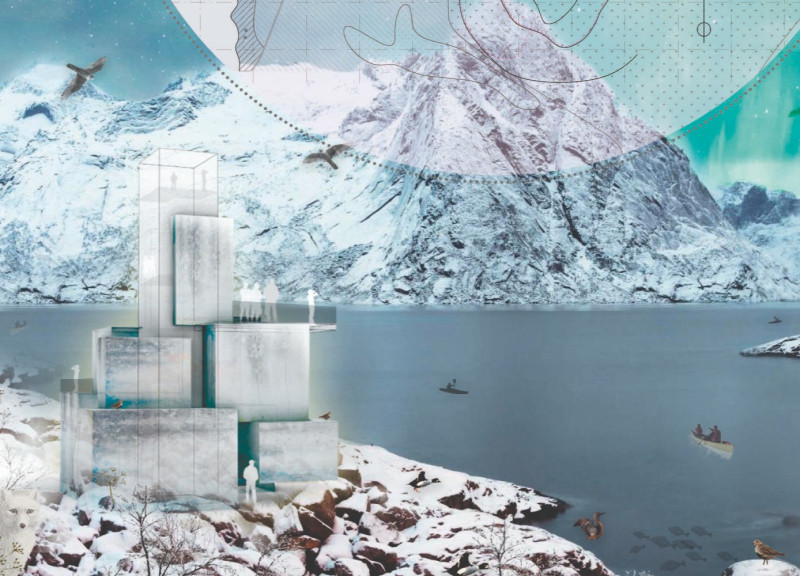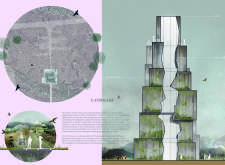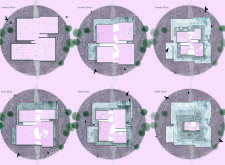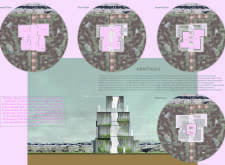5 key facts about this project
The visitor center at Grjótagjá National Park is located in the scenic landscape of Iceland and functions as a welcoming point for tourists and an educational center focused on the area's geological and ecological features. Positioned north of the Grjótagjá cave and close to highway 1, the design concept connects the built environment to the natural landscape, reflecting the unique geological character of the region.
Geological Context
The design draws heavily from Iceland’s tectonic features, inspired by historical navigation markers, specifically cairns. The architect simplifies these traditional forms into stacked blocks, which create a connection with the surrounding terrain. A central axial split in the building symbolizes the geographic divide between the European and American tectonic plates, reinforcing the importance of the natural forces that shape this area.
Functional Layout
The layout of the visitor center enhances the flow of visitors, incorporating essential areas such as a café, restrooms, and locker rooms. These spaces are designed to support tourists before they venture out into the park. A viewing platform on the roof allows visitors to take in the expansive views of the landscape, providing a sense of place within the broader park setting.
Sustainable Engagement
The center promotes sustainable tourism by focusing on education, particularly through the Icelandic Pledge, which encourages responsible interactions with nature. Informational exhibits located within the center play an important role in sharing this message. Additionally, a network of boardwalks connects key attractions in the park, directing visitor movement while protecting sensitive areas of the environment.
Material Selection
Material choices are crucial in this design, with concrete and glass utilized for their durability in Iceland’s climate. Concrete provides structural strength and allows for sculptural expressions, and glass facilitates transparency, connecting the interior spaces with the dramatic exterior landscape.
A smaller visitor center near the Grjótagjá caves regulates access to this fragile site and mirrors the main building's design. It includes necessary amenities, such as showers and lockers, accommodating visitors who plan to enter the caves.






















































